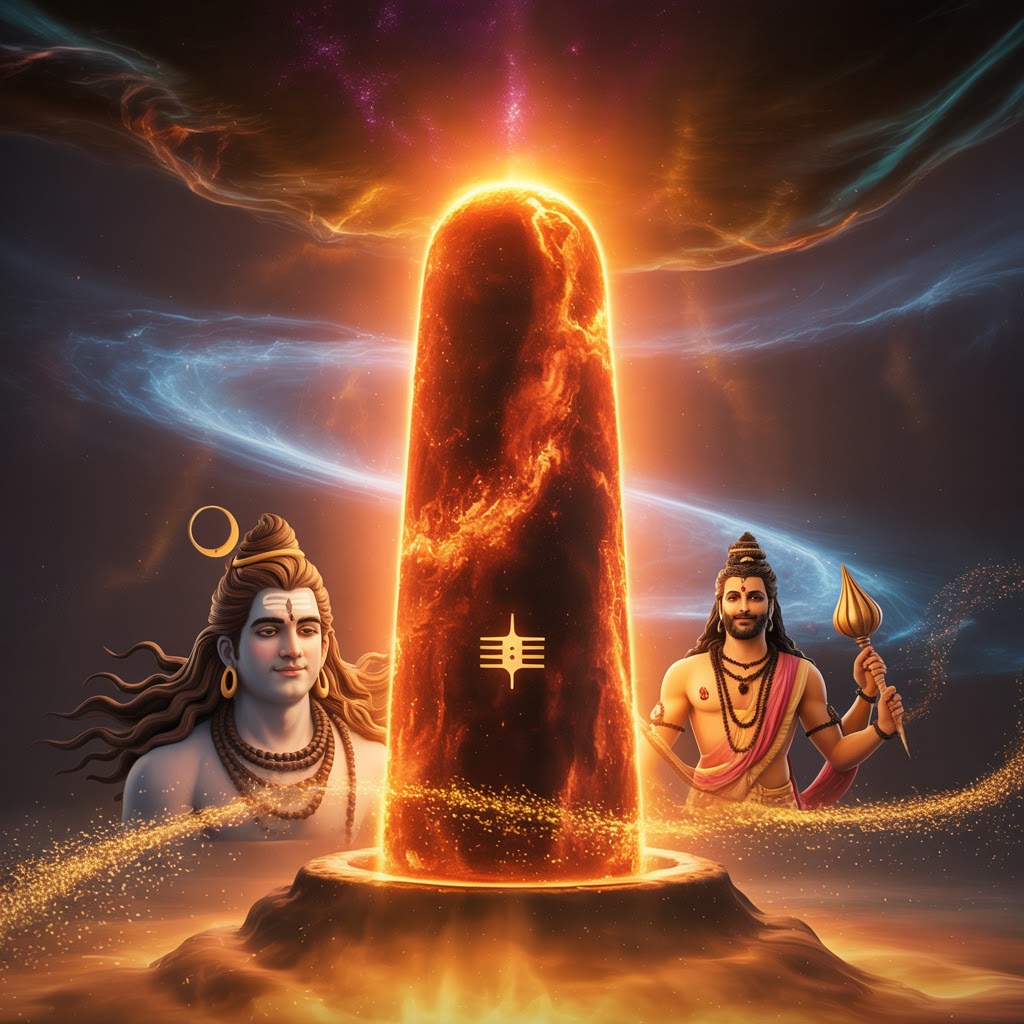Curse & boon stories: The Story of the First Jyotirlinga – How Lord Shiva First Appeared as Divine Light. How did Lord Brahma receive his curse from lord Shiva?
Once, Lord Vishnu was resting on the great serpent Sheshnag in the ocean of milk, surrounded by his divine powers and attendants. At that moment, Lord Brahma arrived and began discussing a topic with Lord Vishnu. Their discussion soon became a debate, which escalated into a fierce battle.
Seeing this terrifying war, the gods became frightened and rushed to Mount Kailash to inform Lord Shiva. When Lord Shiva arrived at the battlefield, a huge pillar of divine fire (Jyoti Stambha) suddenly appeared between Brahma and Vishnu. It was so massive that no one could see where it began or ended.
Brahma and Vishnu decided to find out the beginning and end of this fiery pillar. Vishnu took the form of a boar (Varaha) and went downwards to find the base of the pillar, while Brahma took the form of a swan (Hamsa) and flew upward to find its top.
Vishnu dug deep through the underworld (Patal Lok), but he could not find the base of the pillar. Tired and defeated, he returned. On the other hand, while flying upward, Brahma saw a falling Ketaki (screwpine) flower. The flower told him that the pillar has no end. But Brahma asked the flower to lie and testify in front of Vishnu that Brahma had seen the top of the pillar.
The Ketaki flower agreed and gave false testimony. However, Lord Shiva, who knows all, appeared before them. He was pleased with Vishnu’s honesty and declared that Vishnu would be worshipped just like him. But he scolded Brahma for lying and said that people would not build temples for him or worship him on Earth. Lord Shiva also cursed the Ketaki flower that it would never be used in his worship.
Then, Lord Shiva appeared in front of all the gods in his divine form, and this marked the appearance of the first Jyotirlinga – a form of Shiva as a pillar of light.
The Power of the Panchakshar Mantra
Lord Shiva later revealed that the sacred sound "Om" (ॐ) first emerged from him. This sacred sound is a form of Shiva himself. From this came the powerful five-syllable mantra “Om Namah Shivaya.” This mantra helps fulfill all desires and leads to liberation (moksha). It grants both worldly pleasures and spiritual freedom.
The Importance of Worshipping the Shivlinga
Sage Suta explains how to worship the Shivlinga and perform rituals that lead to liberation. He talks about the importance of good conduct, cleanliness, regular bathing, applying sacred ash (bhasma), chanting mantras, offering charity, earning honestly, and performing fire rituals. All these practices help a person move towards spiritual enlightenment.
Serving Lord Shiva and His Blessings
Goddess Uma (Parvati) is considered the Mother of the Universe, and Lord Shiva is the Father. Anyone who serves them with devotion receives their divine blessings. Worshipping the Shivlinga as your divine parents brings inner joy and spiritual wealth.
True devotion to Shiva brings freedom from the cycle of rebirth. Lord Shiva is pleased when his devotees worship him sincerely. Such devotees are considered forms of Shiva themselves and should be treated with great respect.
Performing Shiva’s worship, especially by offering pradakshina (circumambulation), doing namaskar (bowing), and following the sixteen steps of ritual worship (Shodashopachar), helps remove all sins. No sin on Earth can be destroyed by sincerely worshipping Lord Shiva.
Conclusion
Devotion to Lord Shiva brings peace, happiness, and ultimately liberation. Consider him as your very soul, and worship him with love. That is the highest form of prayer.


